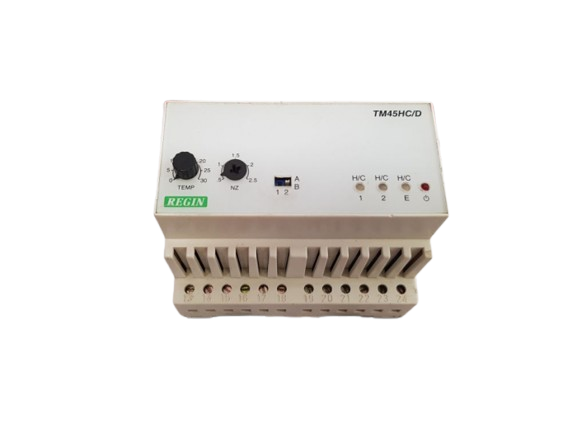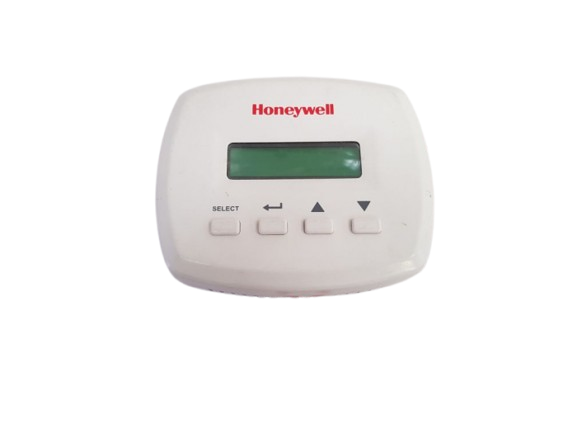Marine automation is crucial for the proper working of modern vessels, ranging from cargo ships to luxury yachts. The proper temperature in machinery and equipment in such a vast and often challenging environment as the open seas is very important for safety, reliability, and efficiency. In this blog post, we would explore the role of a thermostat in marine automation and how it works and why investing in quality thermostat systems makes all the difference in the seamlessness of your marine operations.
What is a Thermostat in Marine Automation?

A thermostat is a device that automatically maintains the temperature of the system to provide a stable environment. In marine automation, thermostats are used to monitor and regulate temperatures of various onboard systems, including engine rooms, electrical panels, and refrigeration units. It senses changes in temperature and can activate heating or cooling mechanisms to keep equipment within that range set. Marine automation is heavily reliant on thermostats to prevent sensitive component damage that may arise from extreme temperatures. For instance, overheating causes the total system to fail, and freezing results from sub-zero temperatures in the fuel lines or other critical systems. All these need temperature regulation so that everything can run efficiently within the hostile marine environment.
How Do Marine Thermostats Work?
Marine thermostats work on temperature sensing. Among the two main categories of thermostats used in marine automation, mechanical and electronic thermostats are of significant note. These can be either of the mechanical type, using a bi-metallic strip or liquid-filled element to sense the change in temperature, or electronic type that employ sensors and digital controllers for better control.
1. Mechanical Thermostats
A mechanical thermostat usually consists of two bonded together in a strip. As this temperature goes up or down, the metals expand or shrink, causing the strip to bend. When this strip bends, it opens or closes the switch, and when it gets activated or closed, activates or deactivates the heating or cooling system connected with it. Mechanical thermostats are simple and reliable, though not as specific as the electronic models.
2. Electronic Thermostats
On the other end, electronic thermostats depend on digital sensors to detect temperature changes and use advanced microprocessors that control heating or cooling systems. These thermostats are more accurate and can easily be interfaced with other automation systems on the vessel. The fine-tuning of temperature settings ensures that electronic thermostats ensure optimum performance and energy efficiency.
Why Thermostats Are Important in Marine Automation?
Marine environments vary and therefore really difficult to a lot of systems on board. The temperature levels fluctuate a lot, going from tropical hot temperatures to frozen water, and ships are at all times susceptible to extreme conditions such as storms and cold fronts. Most of the time, the vessels need temperatures at a stable rate for them to operate as effortlessly as the automated systems inside of them. Thermostats hence play significant roles in marine automation industries due to several reasons, one of which are:
1. Thermostat-Prevention Against Overheating
Marine engines and electrical systems emit a lot of heat if it is not regulated. An unregulated excessive amount of heat causes most components to break down, and in some cases, cost much to repair or even accidents. For instance, in the event of overheating of the engine, it can seize, leading to a rather costly and lengthy repair process. In this case, the most fundamental role played by thermostats is prevention of overheating, where temperature within the engine cooling system is maintained such that all runs under safe temperature limits.
2. Preventing Freezing
The vessel mostly travels through the seas, where cold water is encountered most of the times. It can cause freezing that will cause some problems with the fuel lines, cooling systems, and water pipes. It helps protect such systems from freezing since such an occurrence may lead to blockages or even a tear in the said system. There is no freeze-up, and, therefore, it can continue sailing when the vessel would otherwise be hindered by extreme cold temperatures; heaters or warm circulating fluids turn on when it gets cold enough.
3. Energy efficiency improves
First and foremost, fuel cost is topped along with the environmental footprint of marine vessels. So, thermostats perform their role in these two areas by achieving optimum temperatures across all systems. Accurate control performed by them ensures the cooling and heating systems work as little as is necessary to cool or warm up space, therefore reducing the use of fuel and making a relief from the environmental footprint of the vessel.
4. Improvement of Operational Dependability
Other vessels that operate at hard-to-reach locations, such as a research ship or an offshore oil platform, cannot afford to go out of commission when equipment fails. Thermostats, therefore add operational reliability to marine systems by keeping track of and varying the temperature constantly. This ensures constant peak performance of systems like an engine, generator, or an HVAC unit. A thermostat avoids overheating or freezing, among any other modes of damage caused through extreme temperature levels, and therefore ensures that the vessel is always kept running.
Thermostats in Key Marine Automation
Thermostats are featured in most critical onboard ship systems. Among some of the main systems to benefit from thermostat operation in ship automation include the following:
1. Engine Cooling Systems
The center of any marine vessel is its engine. Cooling of such engines is thus essential at the appropriate temperatures to avoid overheating. A thermostat ensures the coolant temperature is not more than safe engine working temperatures. This minimizes damage that could be made in the engines and prevents surprise break-downs. Using thermostats will ensure vessels have efficient engines, a factor that can prolong their lifespan, thus saving costs in repairs.
2. HVAC Systems
HVAC systems form a critical part of heating, ventilation, and air conditioning, ensuring that the crew is comfortable during severe weather. The thermostats control the internal temperature, which would be considerably different from outside temperatures. In addition to this, it ensures energy consumption due to HVAC runs only when necessary while maintaining an ideal inner temperature.
3. Refrigeration Systems
Marine vessels require refrigeration in the storage of food, medicine, and other perishables. A thermostat is indispensable in regulating the refrigerator's temperature to ensure that items are not spoilt. It could be a cargo ship full of cargo or a biological research vessel storing samples, but the thermostat sees to it that all their refrigeration equipment works within the acceptable temperature range to keep everything fresh and safe for transport.
4. Fuel and hydraulic systems
Temperature changes make fuel systems and hydraulic systems sensitive on marine vessels. Thermostats control appropriate temperatures in the systems so that fuel does not get too viscous to cause blockage in lines that feed fuel. Fluid temperature in hydraulic systems is also kept within limits, thus ensuring they operate efficiently. Apart from the use of the thermostats, proper temperature regulation also plays a significant role in preventing wear and tear in seals among others.
Proper Thermostat Choice in Marine Automation

It is highly crucial that the thermostat utilized in marine automation systems be properly selected for the job. Some factors usually considered when choosing the right thermostat include the following:
1. Precision and Accuracy
In applications where critical systems like engines or refrigeration units need tightly controlled temperature for accuracy, electronic thermostats will prove more accurate than mechanical thermostats, and for such systems, they are ideal. However, in selecting a thermostat, use one with high precision in order to avoid temperature oscillations that may adversely affect your performance.
2. Durable
Marine environments are very cruel with saltwater, humidity, and extreme temperatures. So, thermostats have been chosen considering these standards. Select thermostats that are corrosion-resistant and can deal with various stresses from marine life.
3. Compatibility
Your thermostat should be compatible with the other automation marine system setups. This, therefore, incurs a need for appropriate interfacing of sensors, controllers, and a myriad of on-board systems in your marine product. The modern electronic thermostat offers the potential for integration into wider automation systems and allows real-time monitoring through central control from a central area.
4. Energy efficiency
A ship at sea requires to be very energy efficient. Select thermostats that would save energy. The heating or cooling facilities should be employed only when really needed; otherwise, it consumes fuel and affects the environment too.
Marine automation are equipped with thermostats, which play a significant role in maintaining optimum temperature conditions for the onboard systems that are vital and crucial for most vessels. Engine cooling, HVAC systems, and refrigeration units all require thermostats to prevent overheating, freezing, and inefficiency, so that vessels may function smoothly and dependably under harsh marine environments. An investment in good-quality thermostats improves the performance, reliability, and safety of the marine automation when an operator wishes to improve any vessel. A very important commodity in modern marine operations is, from efficiency in the engines towards the protection of sensitive equipment along with energy-efficiency enhancement by thermostats. Marine automation basically revolves around precision, reliability, and efficiency. Thermostats contribute to all of these variables, ensuring that marine vessels operate, are safe, and cost-effective despite whatever a marine vessel may encounter.





Validate your login
Sign In
Create New Account